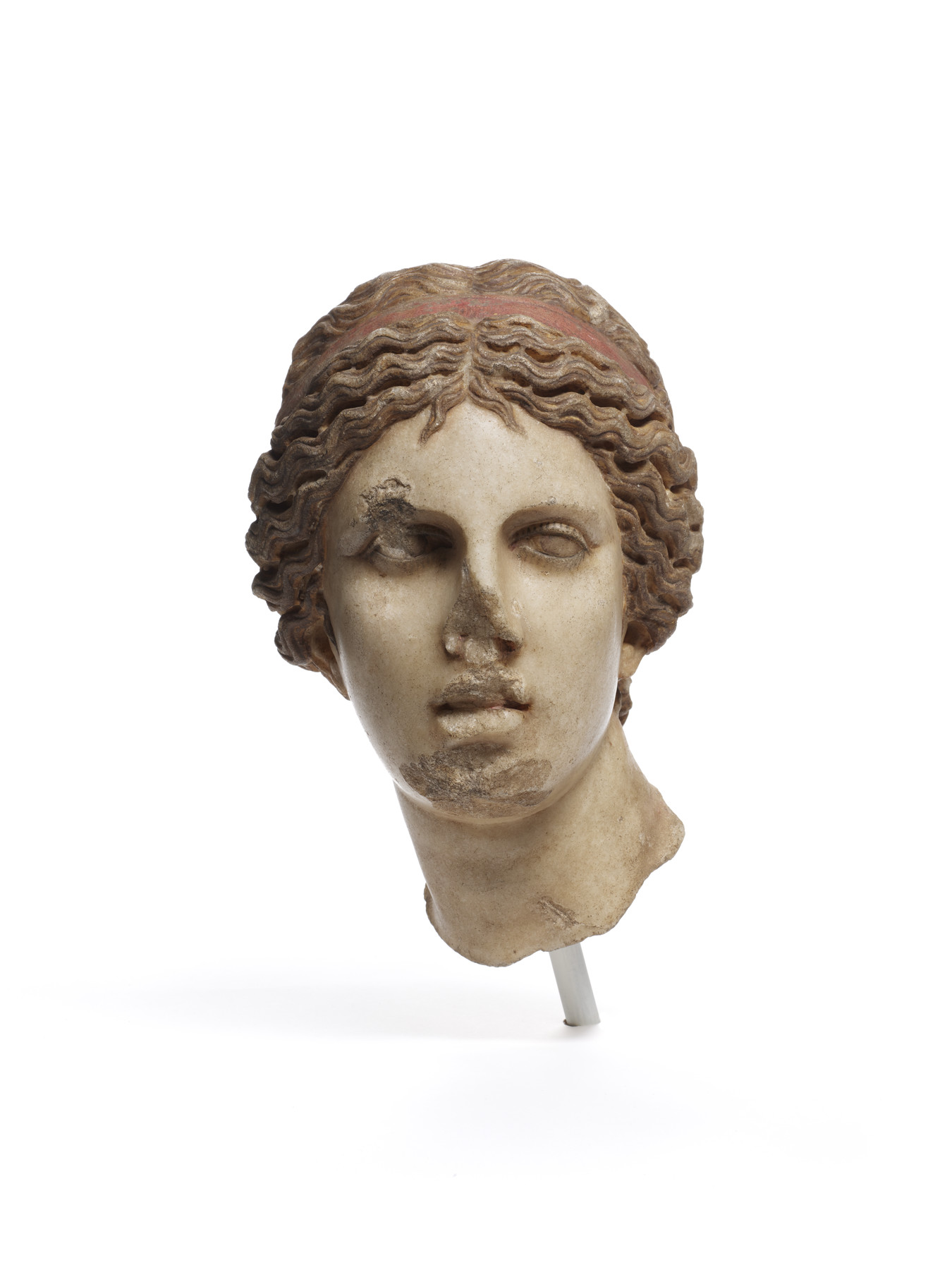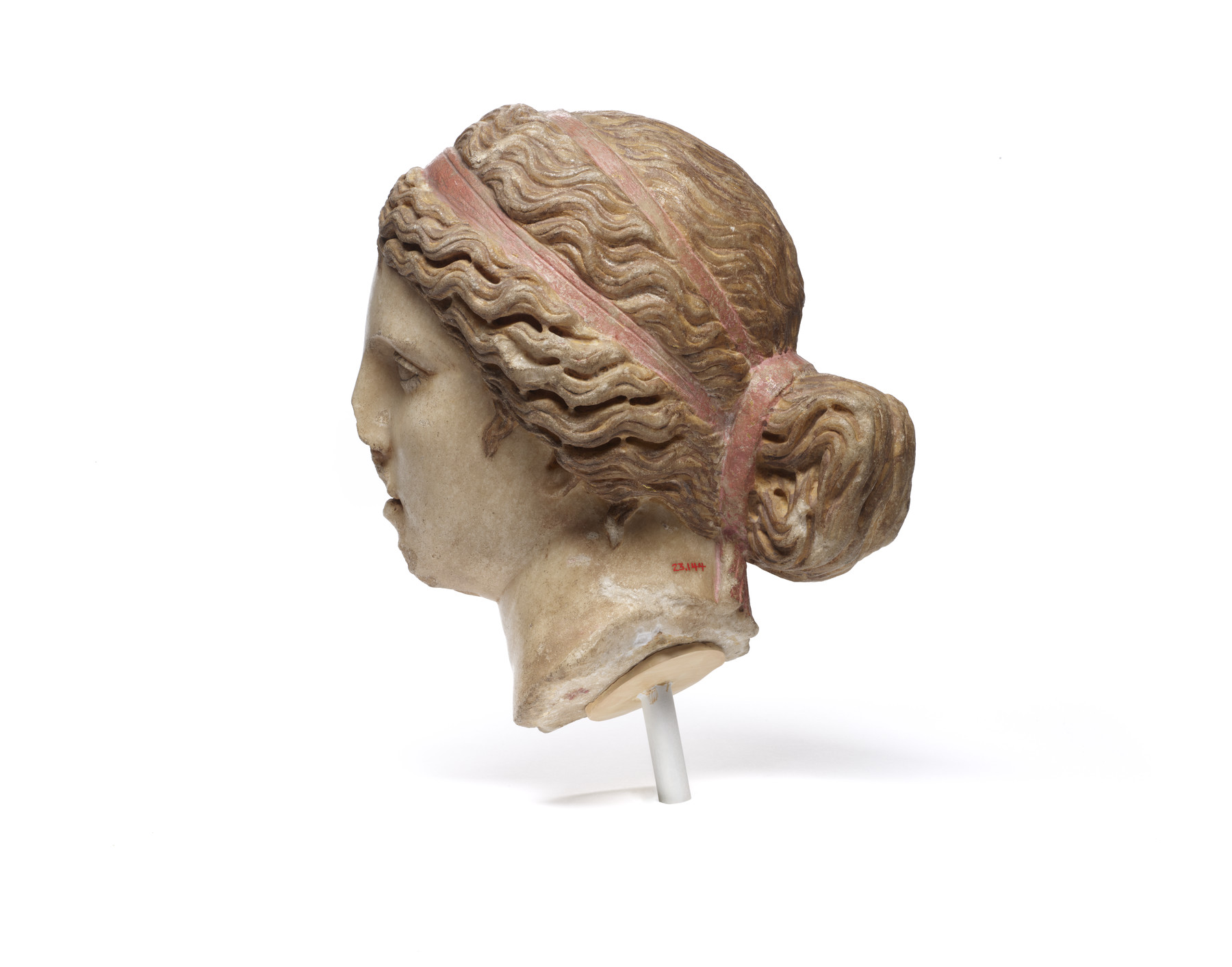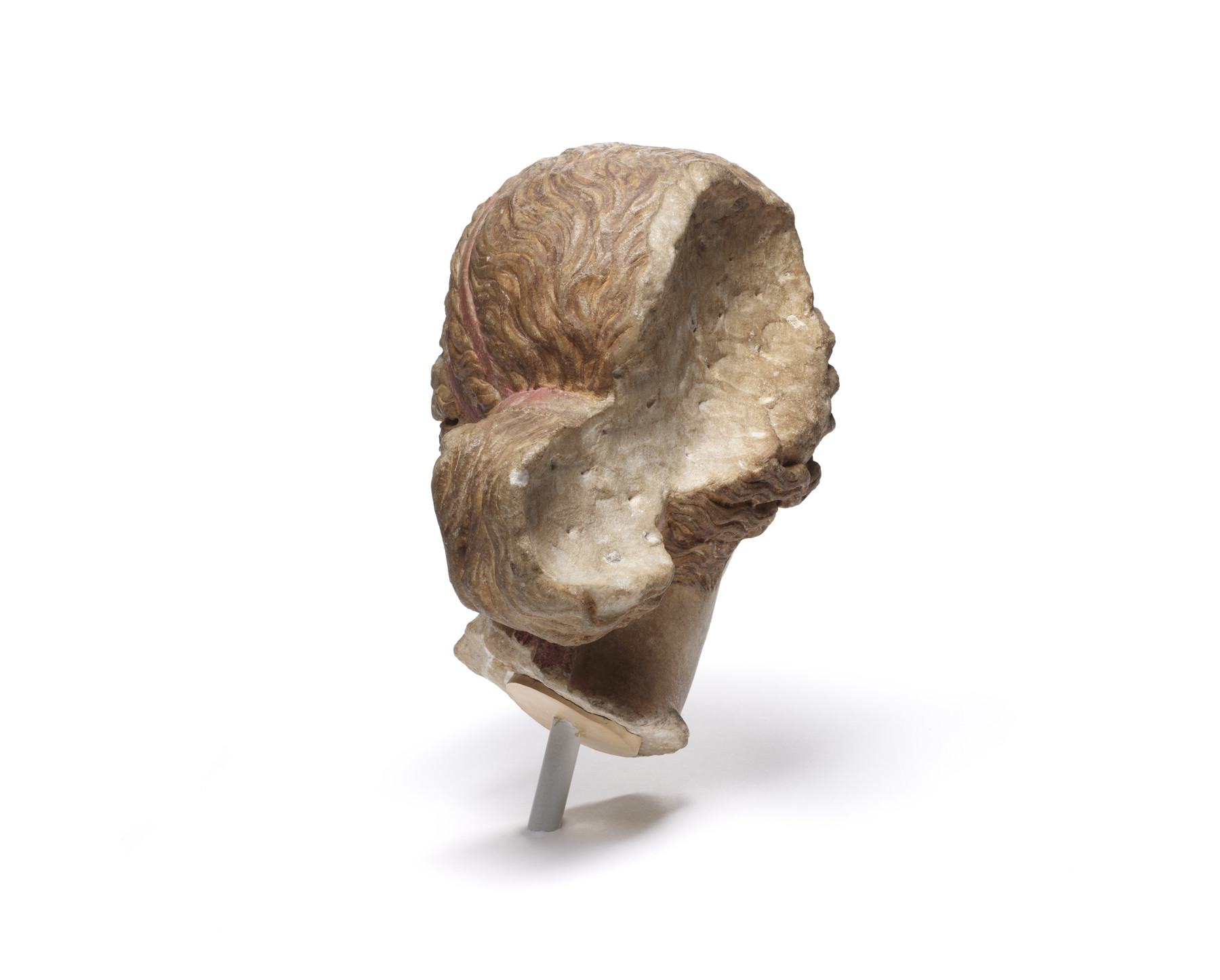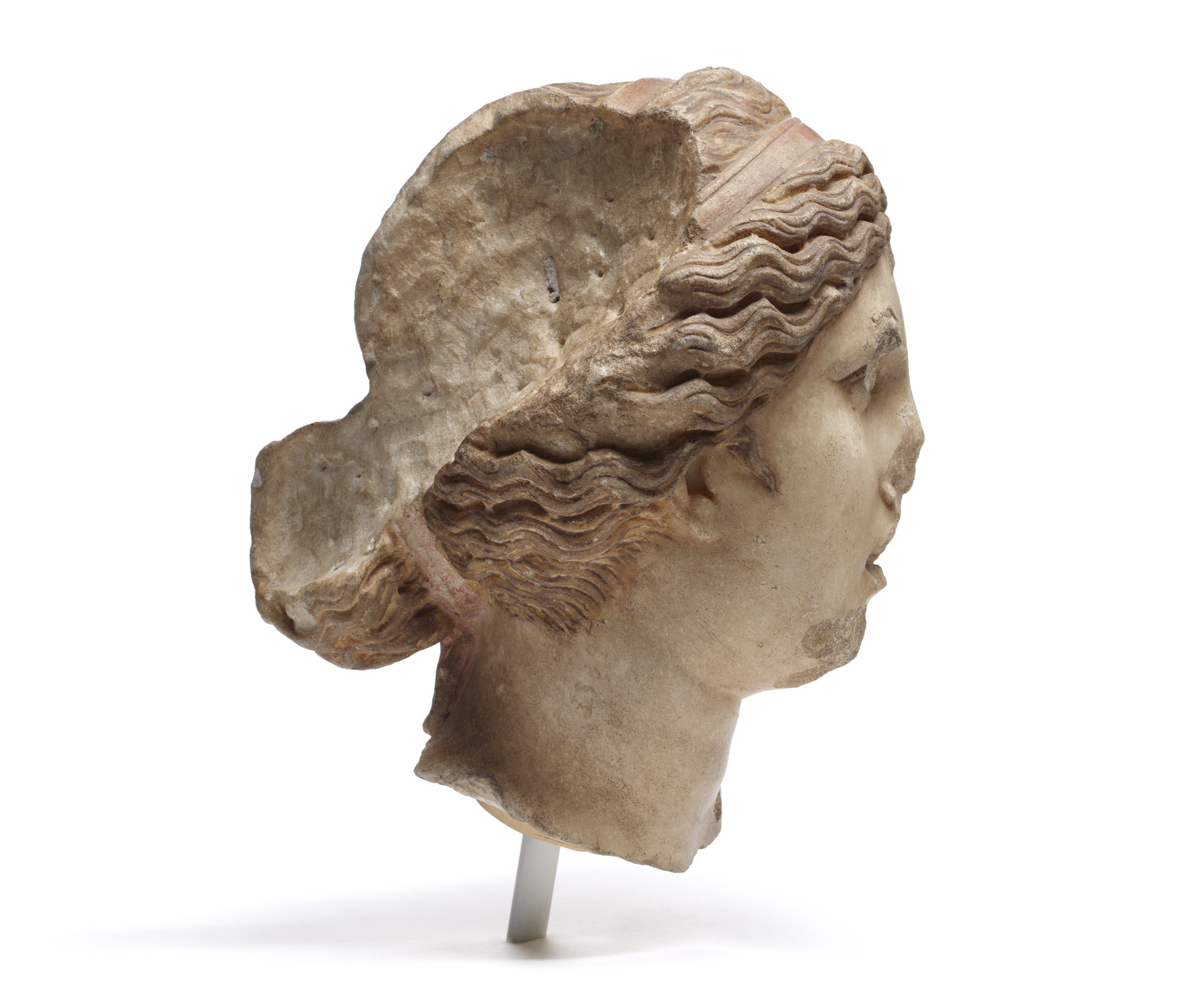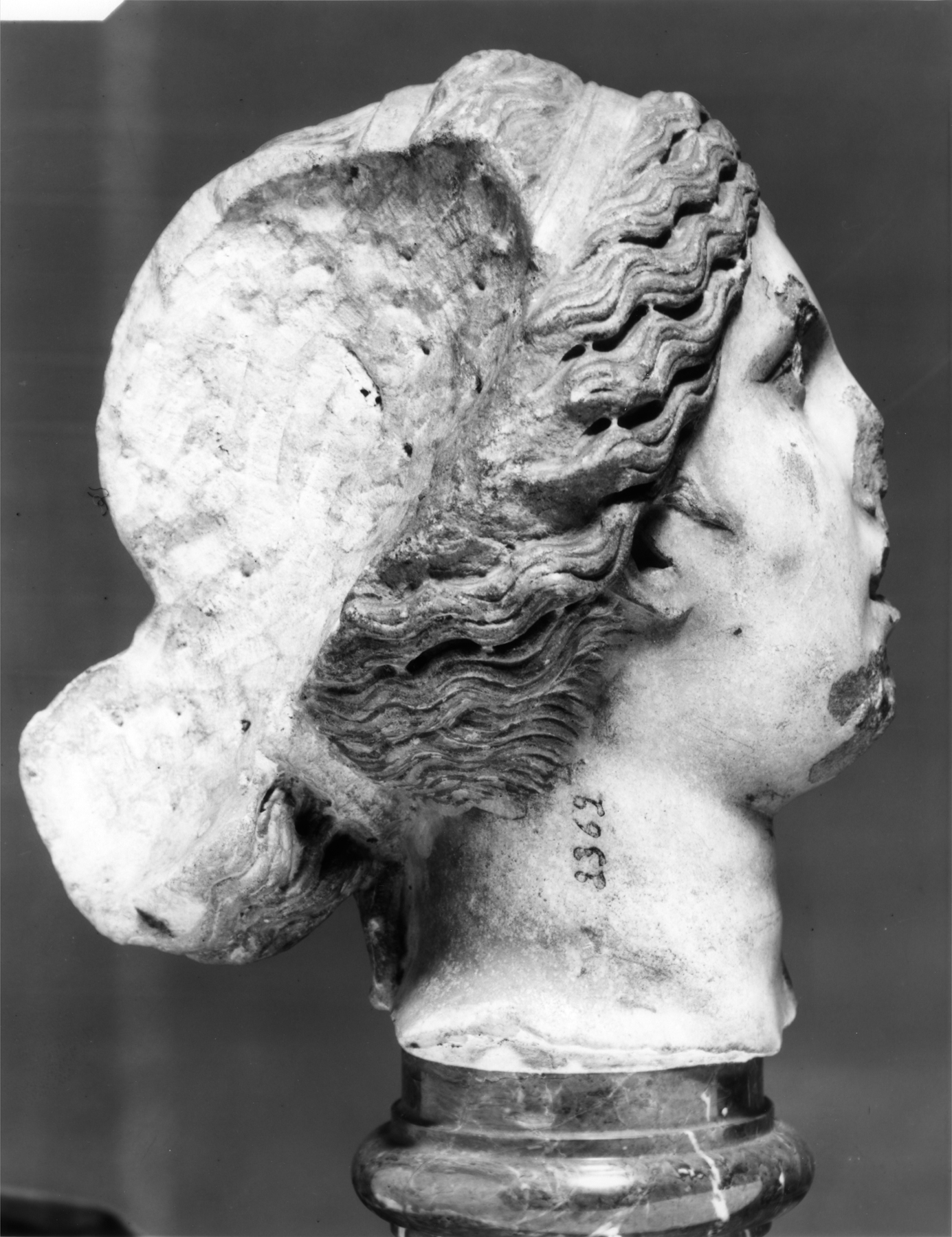Head of the Knidian Aphrodite Type
(Roman Empire )
This head is best paralleled by copies of the Aphrodite of Knidos, which was carved in the 4th century BCE by Praxiteles. The turn of the neck and the gaze of the eyes are down and to the left, and the eyes retain extensive paint, including upper and lower eyelashes. Red paint is well preserved on the double band that wraps around the wavy hair and chignon; the brown paint of the hair is almost entirely preserved. The carved out section of the proper right side of the head may have allowed for attachment of a now-missing attribute, but it is also possible that this section of hair was separately carved. The proper right eye, nose, lips, and chin are damaged.
Inscription
Provenance
Provenance (from the French provenir, 'to come from/forth') is the chronology of the ownership, custody, or location of a historical object.
Maurice Nahman, Cairo, [date and mode of acquisition unknown]; Joseph Brummer, New York, 1927, by purchase [Brummer inv. no. P4147]; Henry Walters, Baltimore, 1927, by purchase; Walters Art Museum, 1931, by bequest.
Conservation
| Date | Description | Narrative |
|---|---|---|
| Technical Report | x-ray diffraction; other |
Geographies
Egypt, Roman Empire (Place of Origin)
Measurements
H: 11 3/16 in. (28.4 cm)
Credit Line
Acquired by Henry Walters, 1927
Location in Museum
Accession Number
In libraries, galleries, museums, and archives, an accession number is a unique identifier assigned to each object in the collection.
In libraries, galleries, museums, and archives, an accession number is a unique identifier assigned to each object in the collection.
23.144

